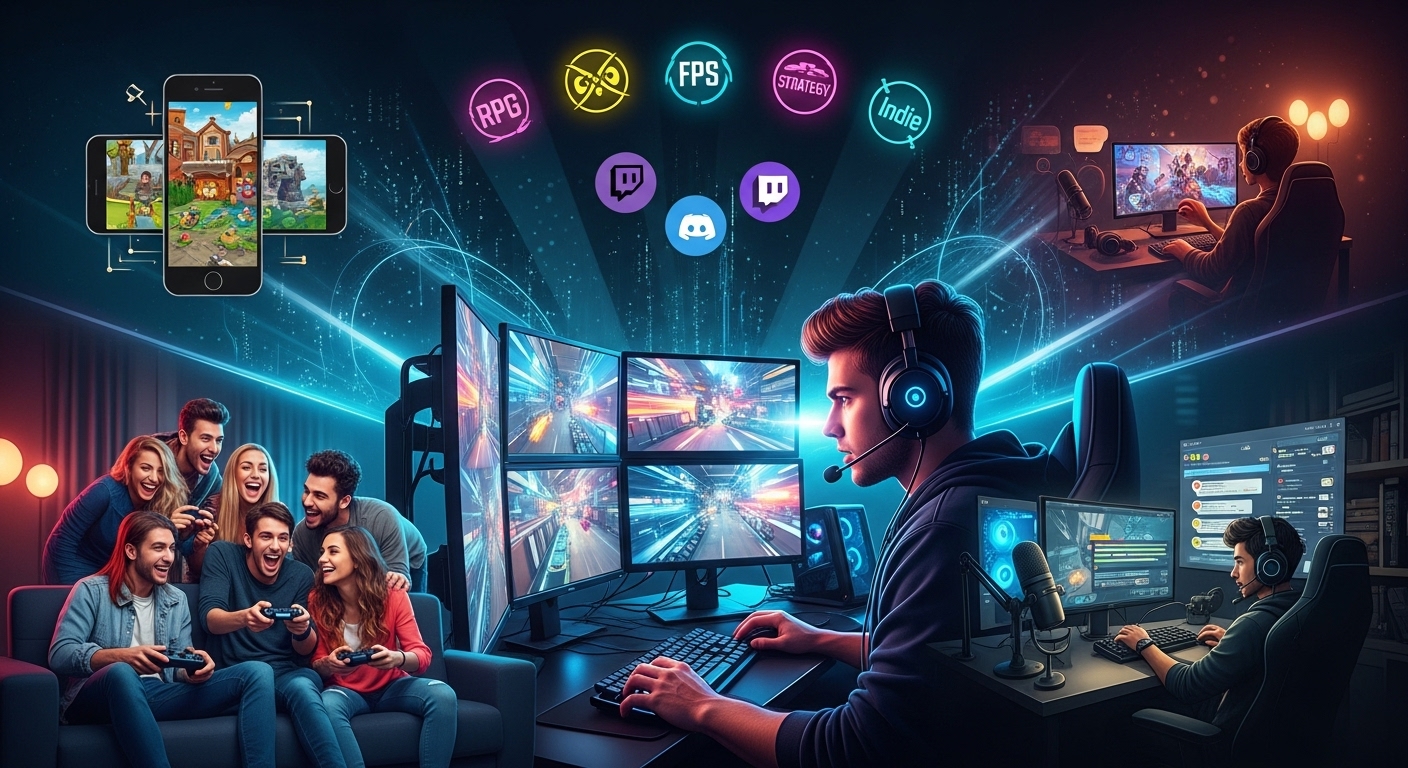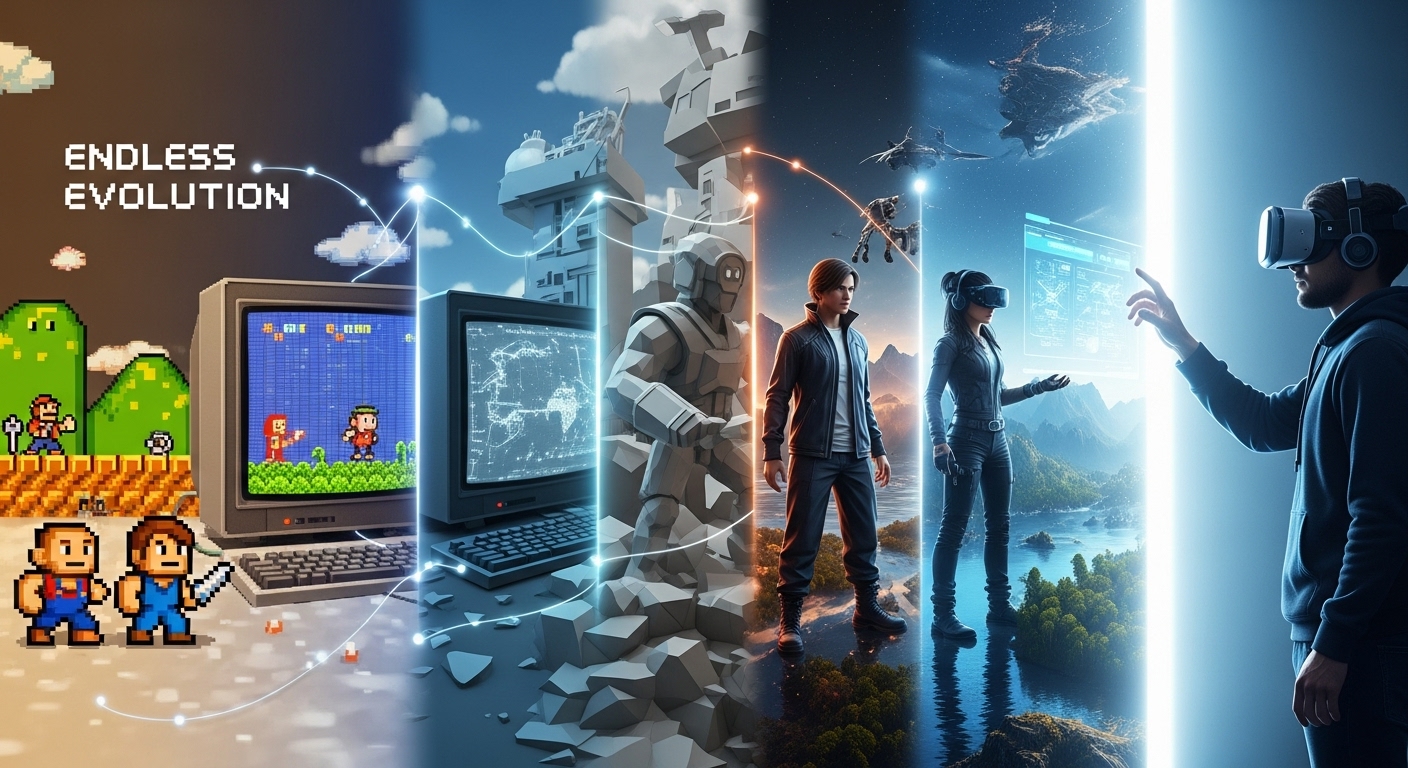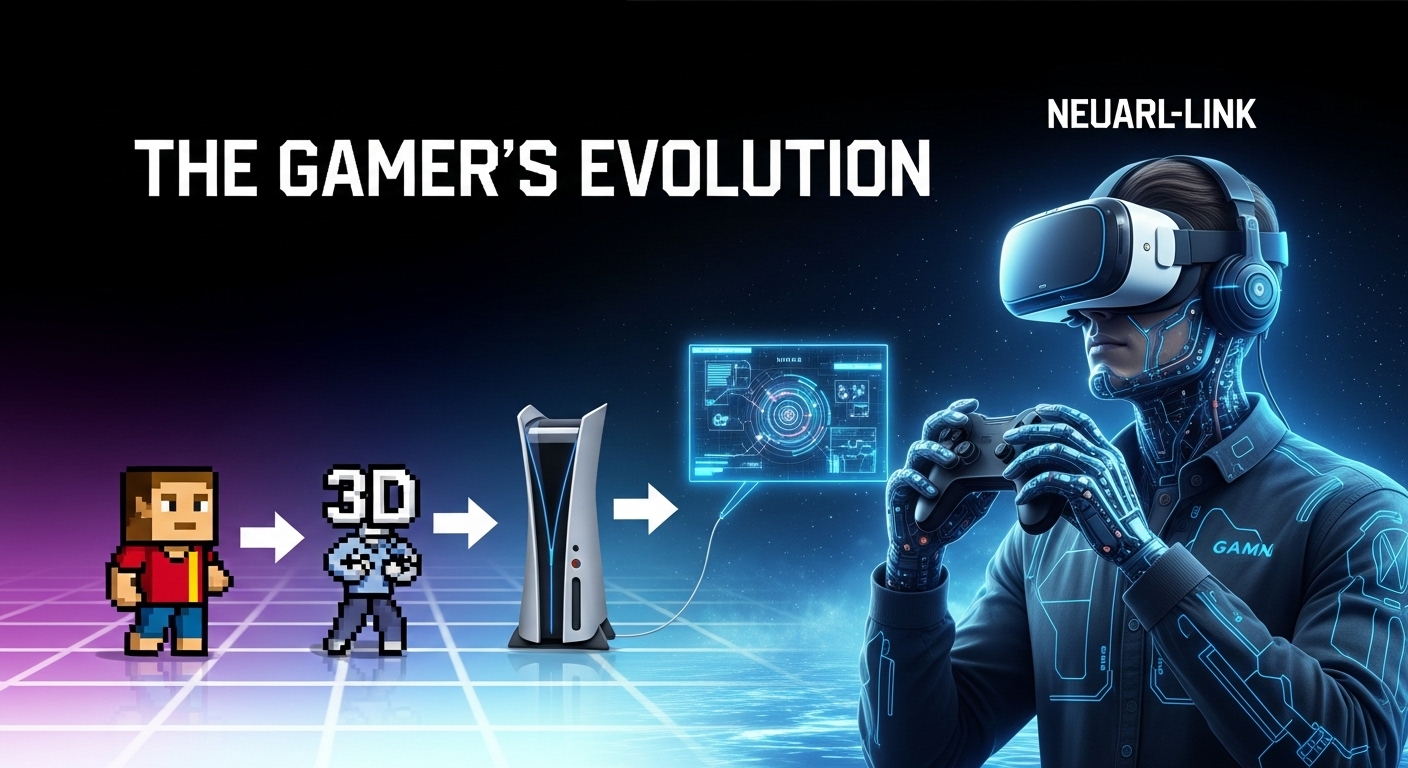Gaming has come a long way from its humble beginnings. What started as simple pixelated screens has now transformed into fully immersive, realistic experiences that captivate millions across the globe. Over the past few decades, gaming has evolved into not just a form of entertainment but a culture, a profession, and even a competitive sport. In this article, we will explore the history of gaming, its evolution, the impact of technology, the rise of competitive gaming, and what the future holds for gamers worldwide.
A Brief History of Gaming
The history of gaming dates back to the 1950s and 1960s when the first electronic games were developed. Early experiments with computers led to simple games like “Tennis for Two” and “Spacewar!” which were rudimentary yet revolutionary. These early games were not widely accessible to the public; they existed mostly in research labs or as experimental amusements for engineers and programmers.
The 1970s marked the commercial boom of gaming with the introduction of arcade machines and home consoles. Iconic games like Pong, Pac-Man, and Space Invaders became cultural phenomena, paving the way for an industry that would soon captivate millions. The introduction of home consoles, like the Atari 2600, allowed people to enjoy gaming in their living rooms, making video games a mainstream form of entertainment.
The Rise of Home Consoles
Home consoles played a critical role in transforming gaming from a niche hobby to a global pastime. The 1980s saw a surge in popularity with Nintendo leading the charge. The Nintendo Entertainment System (NES) revolutionized the market with classics like Super Mario Bros., The Legend of Zelda, and Metroid. These games not only provided entertainment but also told stories, allowing players to connect with characters and worlds on a deeper level.
The Sega Genesis emerged as a strong competitor, offering faster graphics and edgier games that appealed to older audiences. This era laid the foundation for the console wars, a rivalry between gaming companies that pushed technological innovation and game design creativity. As console technology advanced, the graphics improved, controllers became more sophisticated, and gaming became more interactive and immersive.
The Birth of PC Gaming
While consoles dominated living rooms, the rise of personal computers introduced a new frontier in gaming. PC gaming brought flexibility, better graphics, and the ability to create complex simulations. Titles like Doom, Warcraft, and SimCity redefined what gaming could be, offering depth, strategy, and multiplayer experiences. Unlike consoles, PCs allowed modding and customization, creating communities of players who shared content and collaborated on new experiences.
PC gaming also paved the way for online multiplayer experiences. The ability to connect with players across the globe transformed gaming from a solitary activity into a social phenomenon. Games like Counter-Strike and StarCraft became competitive platforms that required skill, strategy, and teamwork, laying the groundwork for modern esports.
Mobile Gaming: Gaming on the Go
The 2000s introduced mobile gaming, expanding the accessibility of video games like never before. With the rise of smartphones, games were no longer confined to consoles or PCs. Simple games like Angry Birds, Candy Crush, and Clash of Clans captured the attention of casual gamers, while more complex mobile games offered deep strategy and competitive play.
Mobile gaming also democratized the industry, allowing indie developers to create games that could reach millions without the need for massive budgets or marketing campaigns. It became clear that gaming was no longer just a niche hobby for hardcore enthusiasts—it was a mainstream activity that spanned all age groups and demographics.
The Rise of Online Gaming Communities
The growth of the internet fundamentally changed gaming culture. Online gaming created communities where players could interact, collaborate, and compete. MMORPGs (Massively Multiplayer Online Role-Playing Games) like World of Warcraft and Final Fantasy XIV created entire virtual worlds where players formed friendships, alliances, and rivalries.
Streaming platforms further enhanced the social aspect of gaming. Gamers could broadcast their gameplay to millions of viewers, providing entertainment and education simultaneously. Twitch and YouTube Gaming became central hubs for gaming culture, making professional gaming more accessible and inspiring a new generation of gamers.
Competitive Gaming and Esports
Esports has transformed gaming into a legitimate career path. Competitive gaming tournaments now draw audiences comparable to traditional sports, with players competing for millions in prize money. Games like League of Legends, Dota 2, and Counter-Strike: Global Offensive have become household names, with professional teams, sponsors, and dedicated arenas.
The competitive nature of esports emphasizes not just skill but strategy, teamwork, and mental fortitude. Players undergo rigorous training regimes, much like traditional athletes, highlighting the physical and mental demands of professional gaming. Esports has also spurred the development of coaching, analytics, and sports psychology within the gaming industry.
Gaming and Technology: Pushing Boundaries
Technological advancements continue to redefine what is possible in gaming. High-definition graphics, virtual reality (VR), augmented reality (AR), and advanced AI have pushed the boundaries of immersion and interactivity. VR games provide experiences that feel tangible and real, from exploring fantastical worlds to participating in first-person adventures. AR games like Pokémon GO merge the digital and physical worlds, encouraging exploration and social interaction.
Artificial intelligence in gaming has also created smarter, more adaptive enemies and NPCs, enhancing the challenge and realism of games. Procedural generation and open-world design allow developers to create vast, dynamic environments that evolve based on player actions, offering endless possibilities and replayability.
The Cultural Impact of Gaming
Gaming has transcended entertainment to become a major cultural force. It influences art, music, fashion, and storytelling. Characters like Mario, Lara Croft, and Master Chief have become iconic figures, while game soundtracks are celebrated for their composition and emotional resonance. Gaming also addresses complex narratives, social issues, and moral dilemmas, offering players meaningful experiences and emotional engagement.
Gaming culture fosters communities united by passion. Cosplay, fan art, conventions, and online forums bring players together, creating spaces for creativity, collaboration, and shared enthusiasm. Gaming has also become a medium for education, therapy, and social activism, demonstrating its versatility beyond mere entertainment.
Challenges in the Gaming Industry
Despite its growth, the gaming industry faces challenges. Issues such as toxic behavior in online communities, addiction, microtransactions, and workplace conditions have sparked debates and reforms. The industry must balance monetization with ethical practices and ensure gaming remains a positive experience for all players.
Accessibility is another crucial concern. Ensuring that games are playable for people with disabilities, diverse backgrounds, and various levels of experience is an ongoing effort. Many developers are now prioritizing inclusive design, recognizing that gaming should be a welcoming space for everyone.
The Future of Gaming
The future of gaming is filled with possibilities. Cloud gaming promises to remove hardware limitations, allowing high-quality gaming on any device. AI-driven narratives could create personalized storylines, adapting in real-time to player decisions. Virtual and augmented reality may become more integrated into daily life, creating experiences that blend the physical and digital worlds seamlessly.
Gaming will continue to push creative boundaries, merging technology and art to deliver experiences that were once unimaginable. As the industry grows, it will remain a space where innovation, imagination, and human connection intersect, offering entertainment, challenge, and inspiration to millions worldwide.
Conclusion
Gaming has evolved from simple pixels on a screen to complex, immersive worlds that captivate audiences globally. It has shaped technology, culture, and social interactions, offering experiences that entertain, challenge, and inspire. As technology advances, gaming will continue to redefine how we play, connect, and imagine. The journey from arcades to virtual reality is not just a story of games—it is a story of human creativity and our relentless pursuit of immersive experiences.
Whether you are a casual player, a competitive gamer, or someone curious about the gaming world, the evolution of gaming reminds us that play is a powerful force that transcends generations, cultures, and technology. The future of gaming is not just something we observe—it is something we participate in, shaping the worlds and stories we will explore for years to come.



